A two-person development team has no business making a 3D platformer. Why not settle for something a little more achievable like a visual novel, a flash game, or just firing up the ‘ol RPG Maker like so many budding game developers have before.
But Analgesic Productions - comprising Melos Han-Tani and Marina Kittika - ignored the easy road and strode headlong into the fire with Sephonie.
Surrounding them are the weatherbeaten remains of late 90s developers who tried and failed to crack the 3D platformer.
Even in 2022 delivering a good 3D platformer is a toughie. Success requires intelligent and creative level design, setting a perfect level of challenge, and capturing that difficult-to-define sense of ‘game feel’ that makes moving a character around a 3D world innately satisfying. Nintendo has it nailed with Mario and - and I’m still faintly dazed at this - so have Analgesic with Sephonie.
Let’s not go nuts. Even in its finest moments, Sephonie isn’t ever close to outdoing Kyoto’s finest, but it gets way closer than you’d expect. Set on the titular island, you play a trio of scientists on a mission to catalogue new forms of life. This involves navigating a series of low-poly yet attractive 3D spaces and hunting down surreal organisms. Once you find an animal you link with it, solve a Tetromino based colour puzzle, and nab its unique puzzle piece for use in future links.
The overall vibe is extremely chill. The platforming is taxing without being frustrating, checkpoints are frequent, lives are unlimited, and it’s extremely difficult to actually fail a puzzle (I never did, so I’m not sure if it’s even possible). The vast majority of these puzzles are also optional. Early on you get an overall objective to track down five key organisms, so if you’re impatient you can just make a beeline for them and ignore the regular animals dotting the maps.
As the game proceeds the influences of the Mushroom Kingdom become ever more apparent (especially when you visit a city full of big mushrooms to bounce around on). The tried-and-tested Nintendo formula of introducing a new gameplay element, iterating on it a few times, and then moving on to something else is present and correct here.
You might find yourself having to collect three glowing pods to blast through a wall, navigate floating platforms that switch on and off every time you jump or (my favourite) have to outrun a deadly ghost of yourself that mirrors everything you just did.
I clocked Sephonie in about seven hours and it threw new mechanics at me right up until the final moments of the final stage. By that point the challenge had increased to “eyebrow furrowing”, but never got beyond that.
On top of all that is a heartfelt yet completely bonkers story. We explore each of the three researchers personalities, love lives, and histories via abstract 3D art, read lots and lots of text, and watch some enjoyably loopy 3D cutscenes.
Sadly the best of these - in which the trio reminisce over their shared experiences of eating fish - comes early on. The later ones feel like they ran out of development time and are simply text over static photographs. The games is also heavily preoccupied with Taiwanese identity and history, with damn near everything you encounter eventually looping back to Taiwan somehow. This element doesn’t do much for me, but it’s clearly important to the developers so go off guys.
Cards on the table, Sephonie’s narrative came across as impenetrably weird and I never came close to having any emotional investment in it. Even so, I’m glad it’s there, as it provides a fun little tuile atop the solid bedrock of the base gameplay. Perhaps some of the cutscenes do go on a teeny bit too long, and perhaps something has been slightly lost in translation, but though I was often confused I was never bored.
So far as the actual game is concerned, my only complaint about the platforming is that the sprinting and wall-running mechanic is a little wonky. There’s an admirable commitment to simplicity in the controls, with almost everything being achieved with a jump and ‘sprint/boost’ trigger button. Wallrunning is activated by sprinting into a wall at a specific angle, but it’s just fiddly enough that I wish they’d assigned it an actual button.
The tetromino puzzle sections aren’t quite fully-formed. Like the platforming, these puzzles are full of twists via special blocks (whose function is handily explained at all times), though they’re all ridiculously easy. In the menu, there’s an option to make them even easier, but I don’t think a small child would have much trouble with them at the default difficulty. I kept waiting for them to develop into a challenge, but the closest it got was the final boss (which I still beat the first time without breaking a sweat).
Then again, I’d rather the puzzles be too easy than too hard. Some of the game’s best writing is in the creature descriptions after you link with them (Trash Octopus for life) and making them harder would encourage players to avoid them.


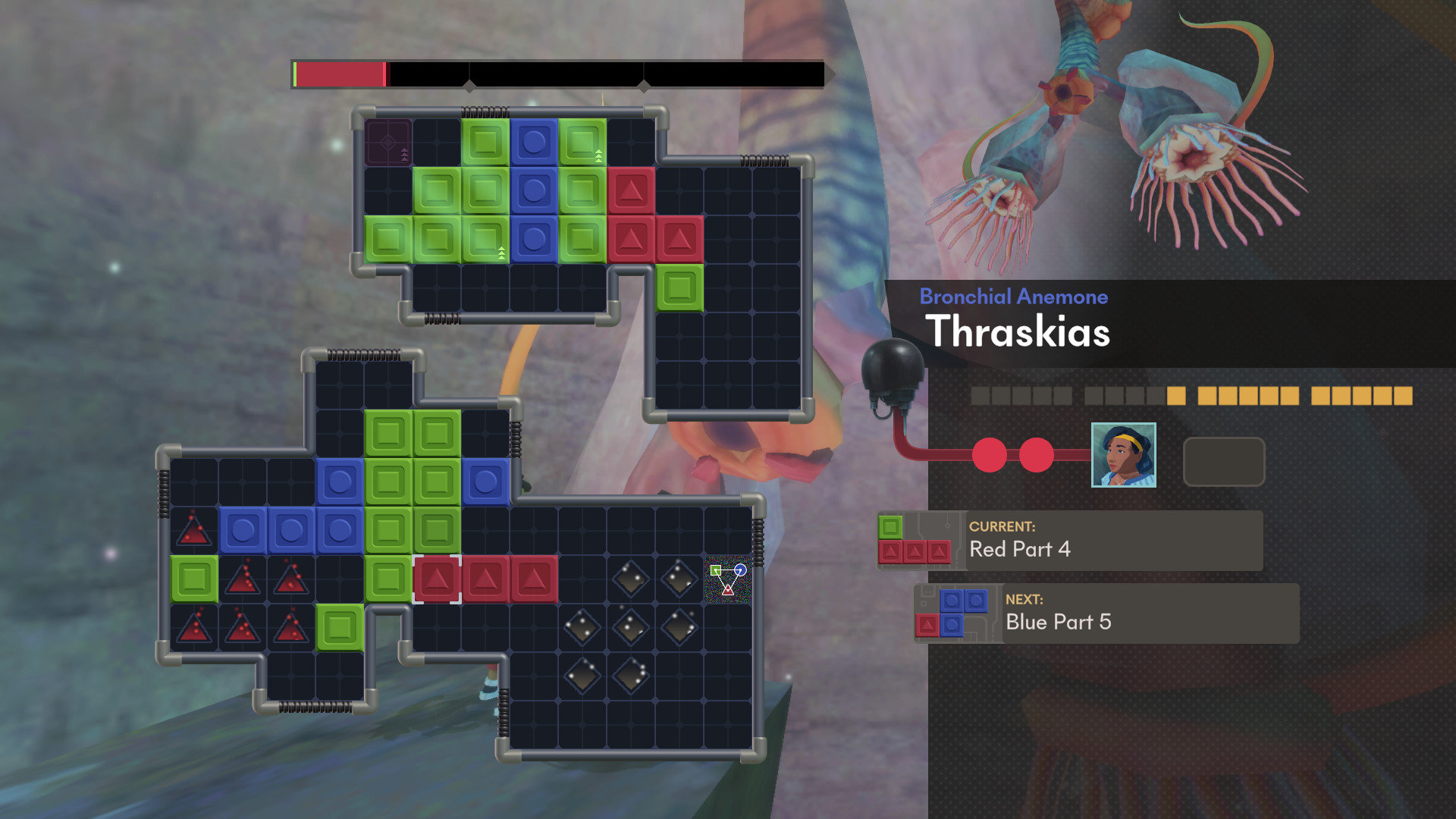
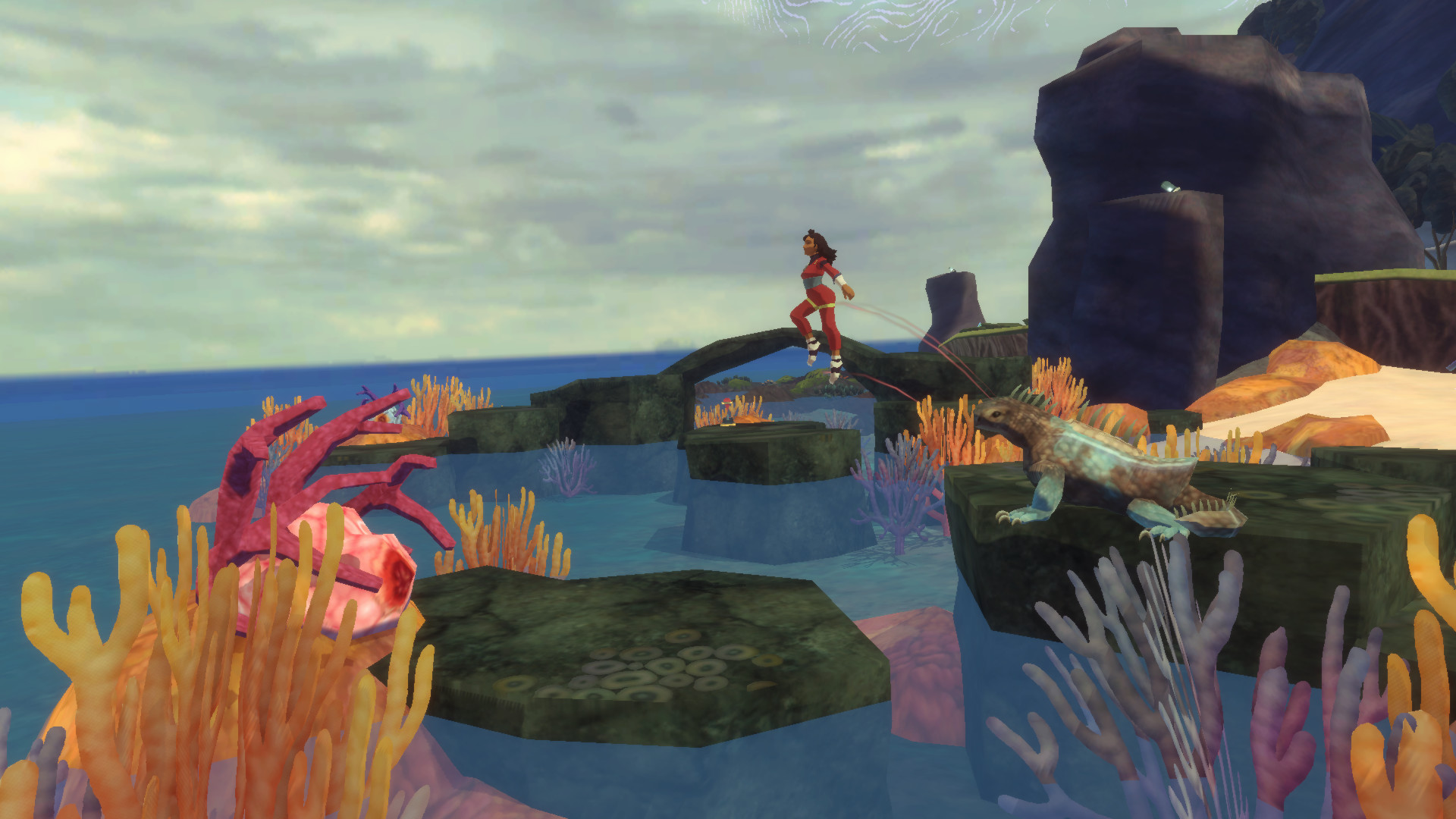
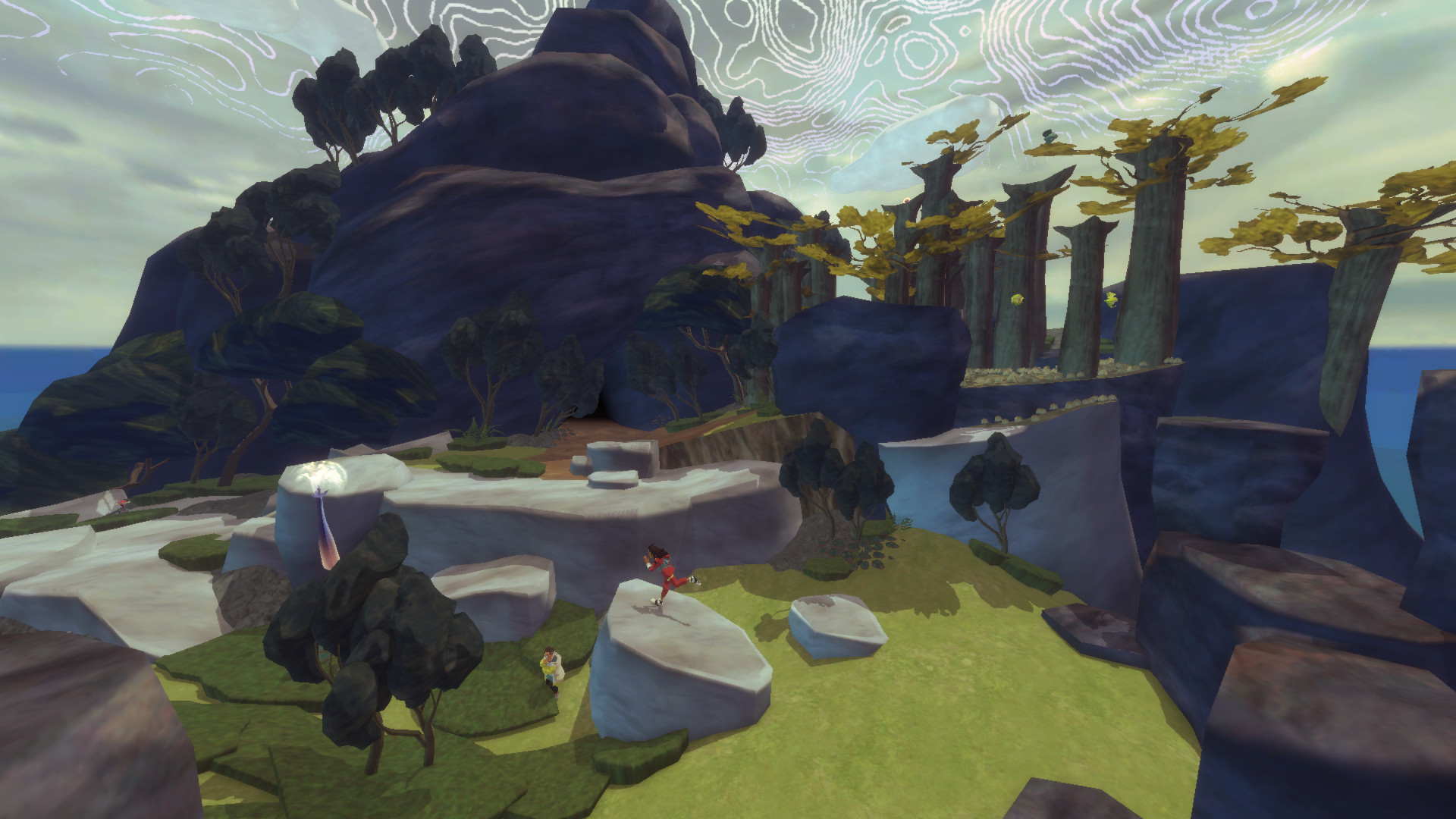
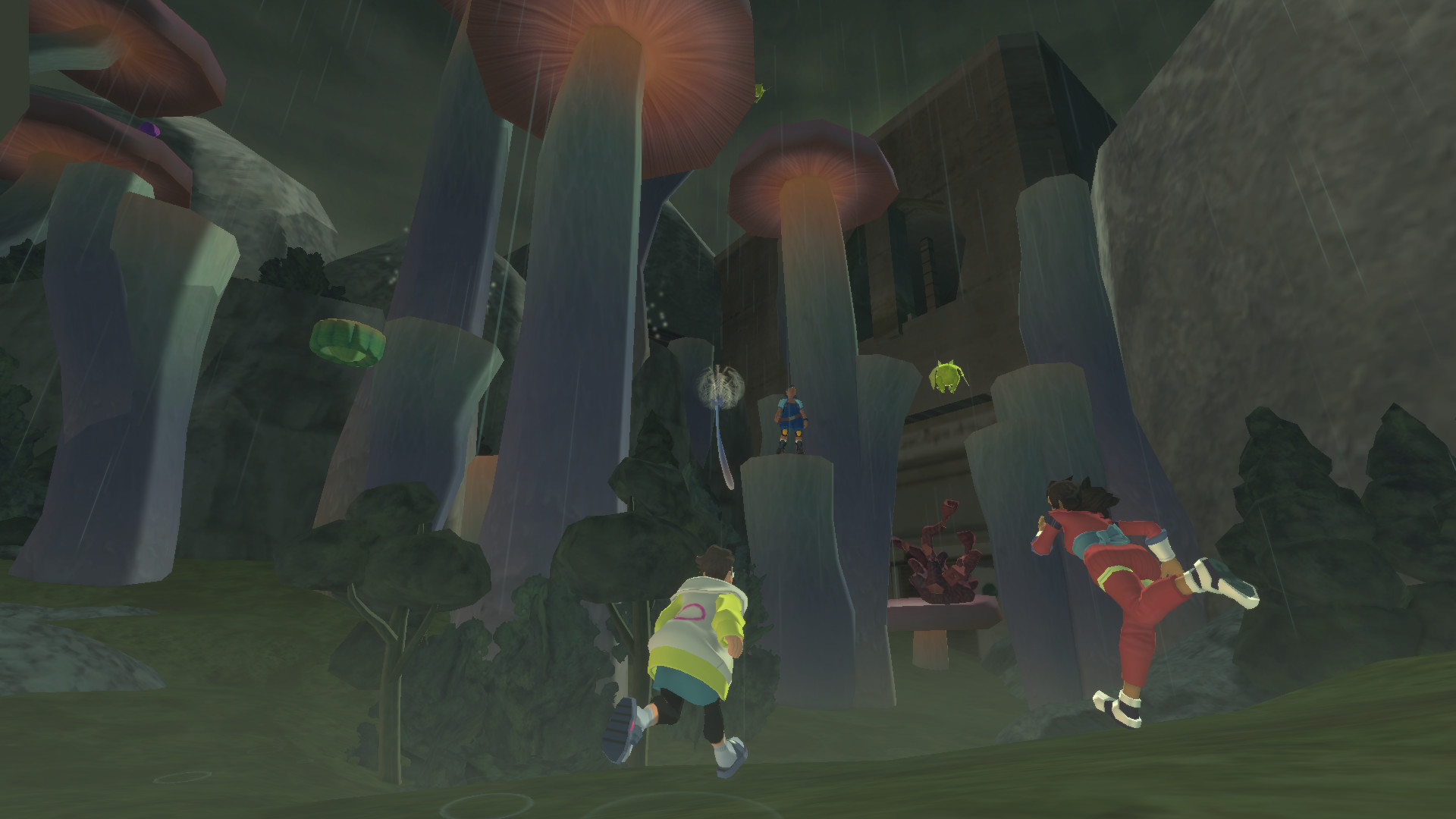
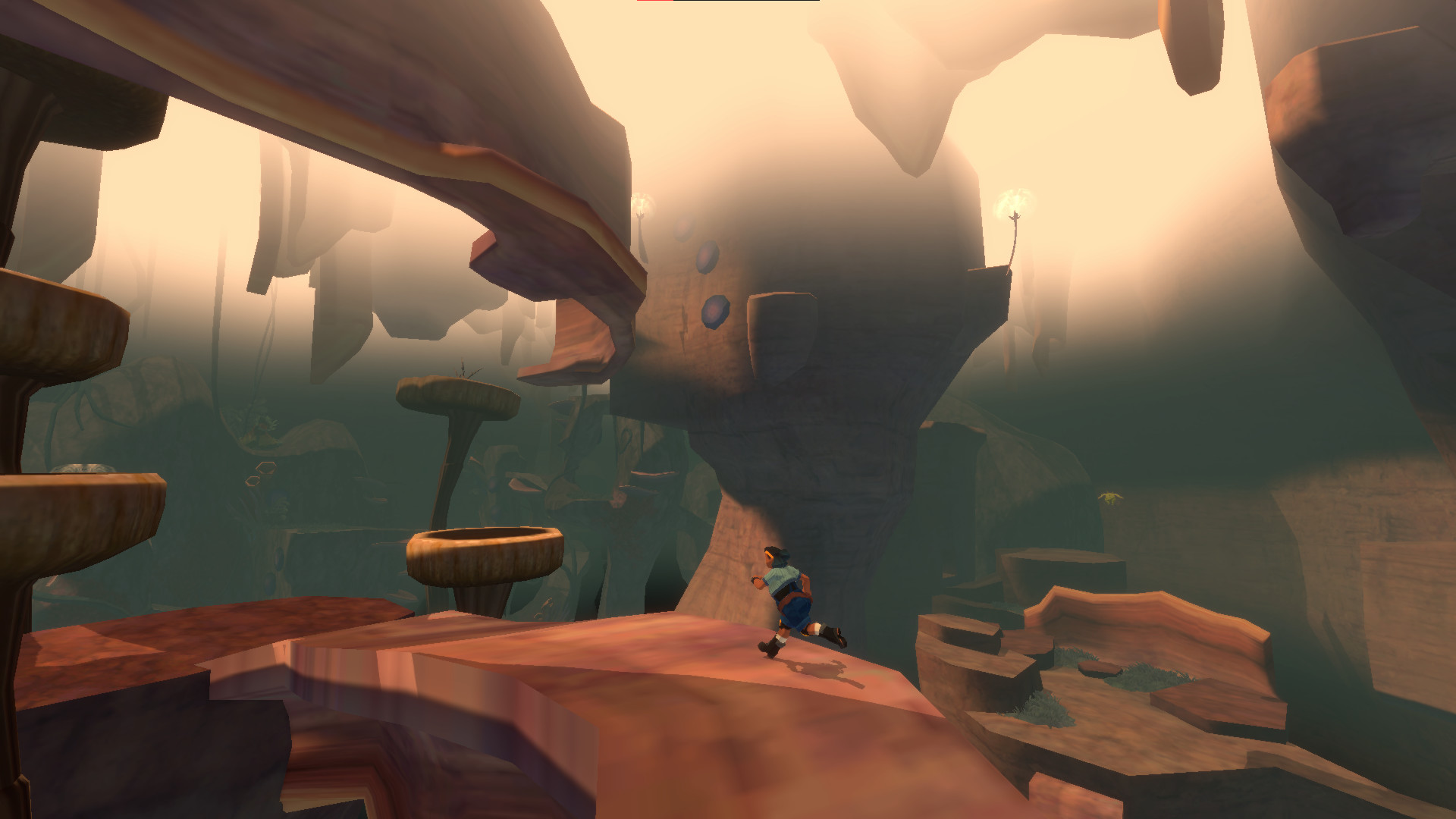

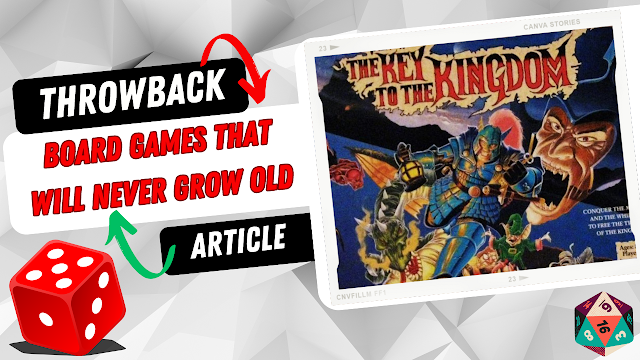



No comments:
Post a Comment
Like what you see in the Games Freezer?
Why not tell us what you think with a few well-chosen comments? :)
Note: only a member of this blog may post a comment.